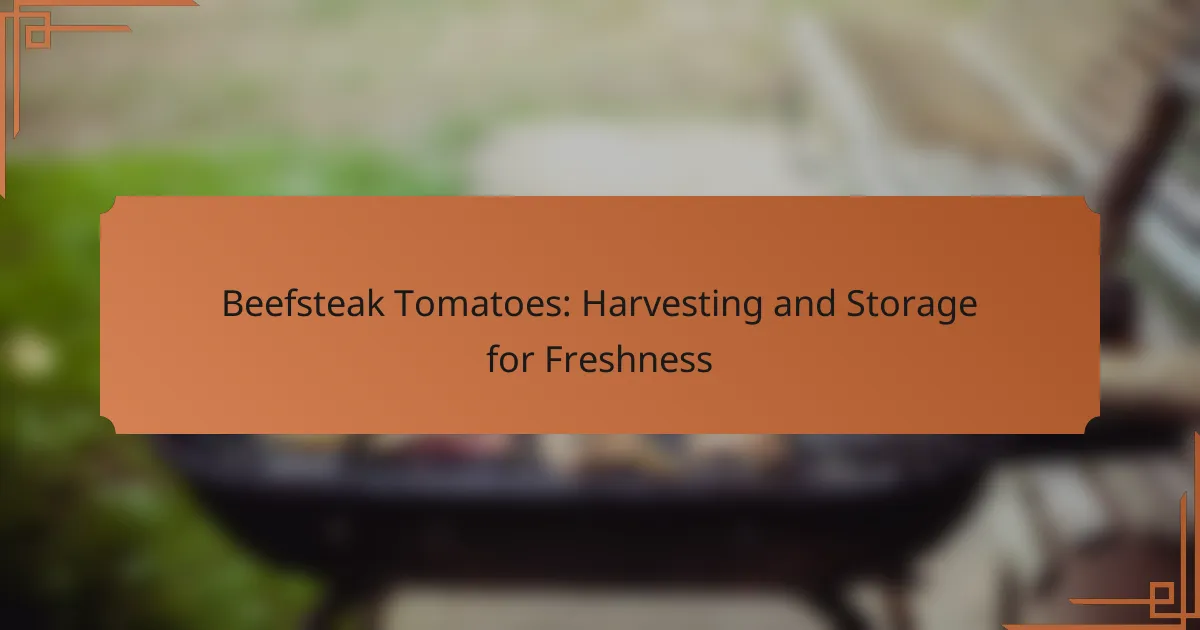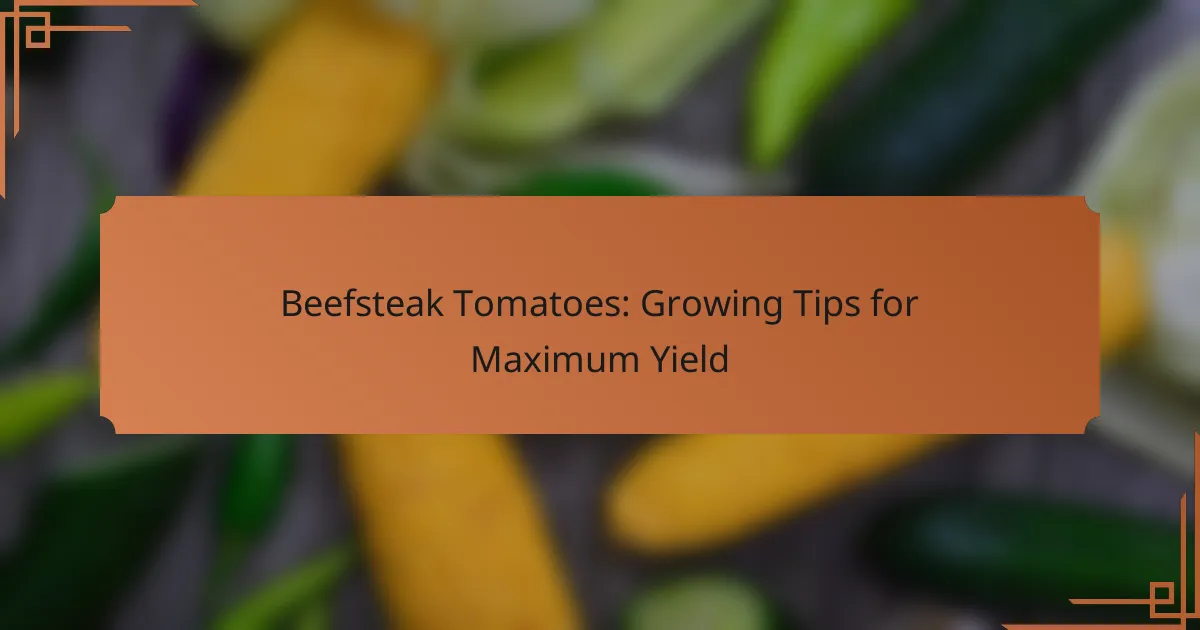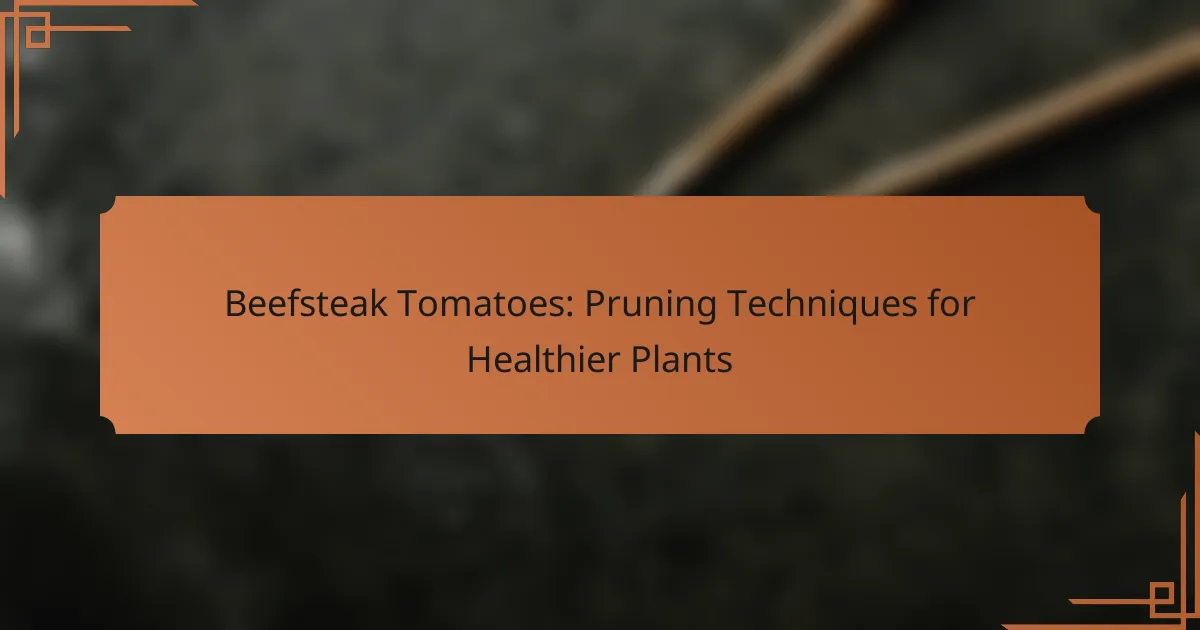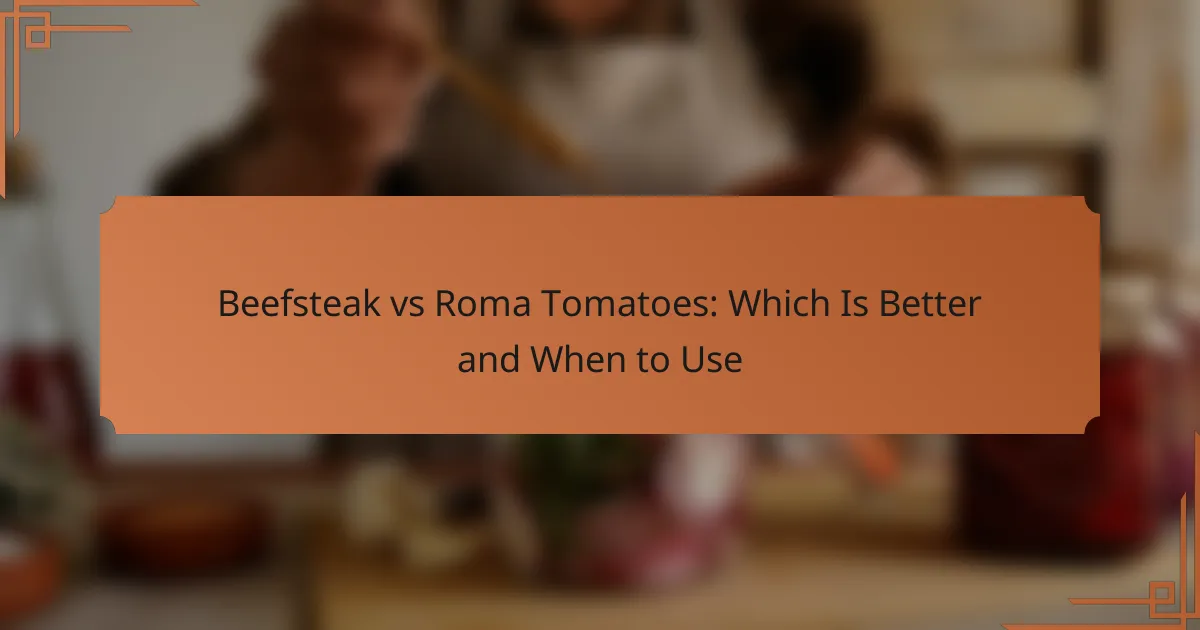Harvesting beefsteak tomatoes at the right time and using proper techniques is essential for ensuring their maximum freshness and flavor. Once harvested, storing them correctly can significantly extend their shelf life and preserve their delicious taste, making it important to follow best practices for both harvesting and storage.
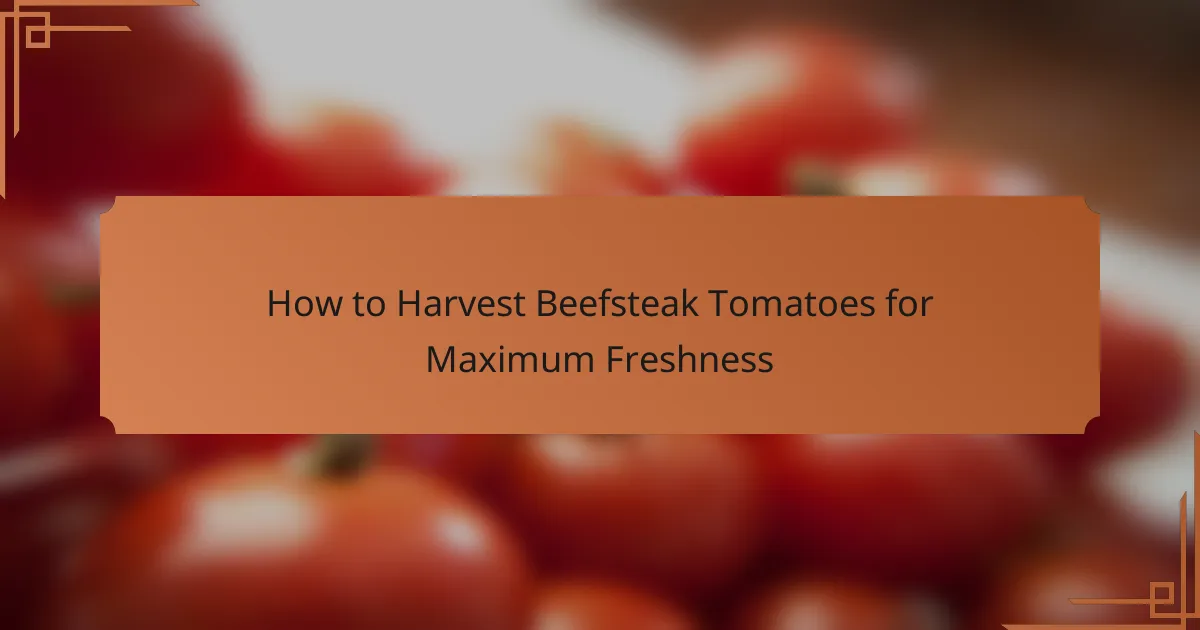
How to Harvest Beefsteak Tomatoes for Maximum Freshness
To harvest beefsteak tomatoes for maximum freshness, timing and technique are crucial. Picking them at the right moment ensures optimal flavor and texture, while proper handling preserves their quality until consumption.
Timing for Harvesting
The best time to harvest beefsteak tomatoes is when they are fully colored and slightly firm to the touch. Typically, this occurs in late summer to early fall, depending on your climate. Monitor your plants regularly as tomatoes can ripen quickly in warm weather.
Consider harvesting in the morning when temperatures are cooler, which helps maintain freshness. If you anticipate rain, it’s wise to pick them beforehand to avoid splitting or rot.
Best Techniques for Picking
When picking beefsteak tomatoes, use a gentle twisting motion to detach them from the vine. This minimizes damage to the fruit and the plant. Avoid pulling or yanking, as this can bruise the tomatoes.
Using scissors or pruning shears can also be effective, especially for larger fruits. Cut the stem about an inch above the tomato to allow for easier handling and reduce the risk of injury to the plant.
Signs of Ripeness
Beefsteak tomatoes are ripe when they exhibit a deep, uniform color, typically red or pink, depending on the variety. They should feel slightly soft but not mushy when gently squeezed.
Another sign of ripeness is the aroma; a sweet, fragrant smell indicates that the tomatoes are ready to be harvested. If they still have a green or yellow hue, they need more time on the vine.
Tools Needed for Harvesting
Essential tools for harvesting beefsteak tomatoes include pruning shears or scissors, a basket for collection, and gloves to protect your hands. Using gloves can help prevent the transfer of oils and dirt to the fruit.
Having a small towel handy can also be useful for wiping off any dirt from the tomatoes after picking, ensuring they are clean for storage.
Post-Harvest Handling
After harvesting, handle beefsteak tomatoes with care to avoid bruising. Store them at room temperature away from direct sunlight to maintain their flavor and texture. If they are not fully ripe, you can place them in a paper bag to speed up the ripening process.
Avoid refrigerating fresh tomatoes, as cold temperatures can alter their taste and texture. Instead, consume them within a week for the best flavor and quality.
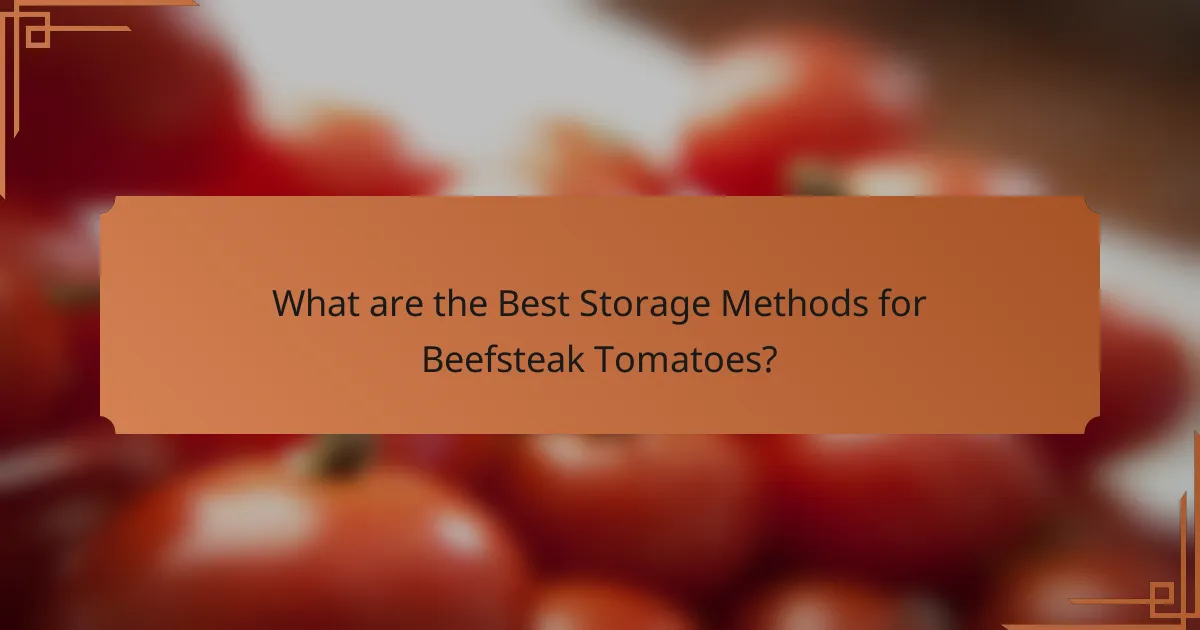
What are the Best Storage Methods for Beefsteak Tomatoes?
The best storage methods for beefsteak tomatoes involve keeping them in conditions that maintain their freshness and flavor. Optimal storage can significantly extend their shelf life and preserve their taste, making it essential to follow proper techniques.
Ideal Storage Conditions
Beefsteak tomatoes thrive in a cool, dark place with good air circulation. The ideal temperature range for storing these tomatoes is between 55°F and 70°F (13°C to 21°C). Avoid exposing them to direct sunlight, which can cause them to ripen too quickly and spoil.
Using a breathable container, such as a cardboard box or a mesh bag, can help maintain airflow around the tomatoes. This prevents moisture buildup, which can lead to mold and decay.
Short-Term vs Long-Term Storage
For short-term storage, keep beefsteak tomatoes at room temperature for up to a week. This allows them to retain their flavor and texture. If you need to store them for a longer period, consider freezing them after blanching, which can extend their shelf life for several months.
When freezing, slice the tomatoes and place them in airtight containers or freezer bags. Label them with the date to keep track of freshness. Remember that freezing may alter the texture, making them better suited for cooking rather than fresh consumption.
Refrigeration Effects on Flavor
Refrigerating beefsteak tomatoes can negatively impact their flavor and texture. Cold temperatures can suppress the development of their natural sugars, leading to a bland taste. If you must refrigerate them, do so only after they are fully ripe and consume them within a few days.
To mitigate flavor loss, allow refrigerated tomatoes to come to room temperature before eating. This can help restore some of their original taste and aroma, making them more enjoyable. However, it is best to avoid refrigeration whenever possible to maintain their quality.
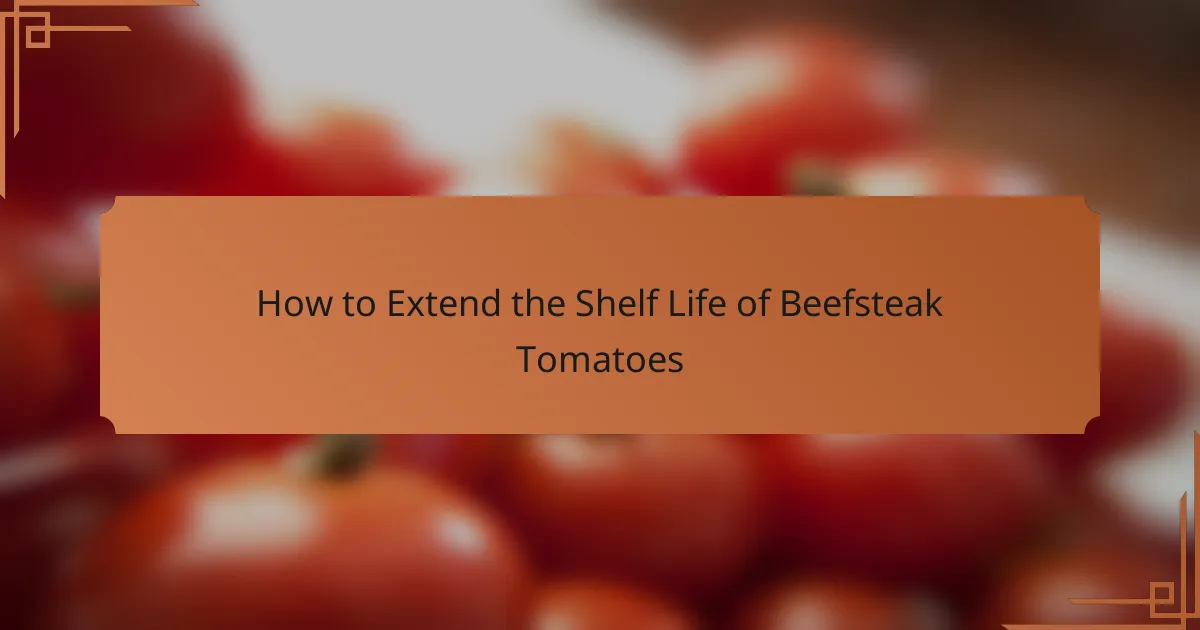
How to Extend the Shelf Life of Beefsteak Tomatoes
To extend the shelf life of beefsteak tomatoes, proper harvesting and storage techniques are essential. This ensures they remain fresh and flavorful for an extended period, allowing you to enjoy them longer.
Preservation Techniques
Several preservation techniques can help maintain the quality of beefsteak tomatoes. These include refrigeration, drying, and using preservatives. Each method has its benefits, depending on how long you wish to store the tomatoes and how you plan to use them later.
Refrigeration is effective for short-term storage, while drying can be ideal for long-term use in sauces or soups. When using preservatives, ensure they are food-safe and suitable for your intended use.
Using Airtight Containers
Storing beefsteak tomatoes in airtight containers can significantly prolong their freshness. These containers help prevent moisture loss and protect the tomatoes from exposure to air, which can lead to spoilage.
Choose containers that are appropriate for the quantity of tomatoes you have. For best results, use glass or BPA-free plastic containers, and make sure they are clean and dry before use.
Freezing vs Canning
When deciding between freezing and canning beefsteak tomatoes, consider your storage space and intended use. Freezing is simpler and preserves the fresh taste, while canning requires more preparation but can store tomatoes for longer periods.
Freezing typically retains the texture and flavor of fresh tomatoes better than canning. However, if you prefer a shelf-stable option, canning is a reliable choice, as long as you follow safe canning practices to avoid spoilage.
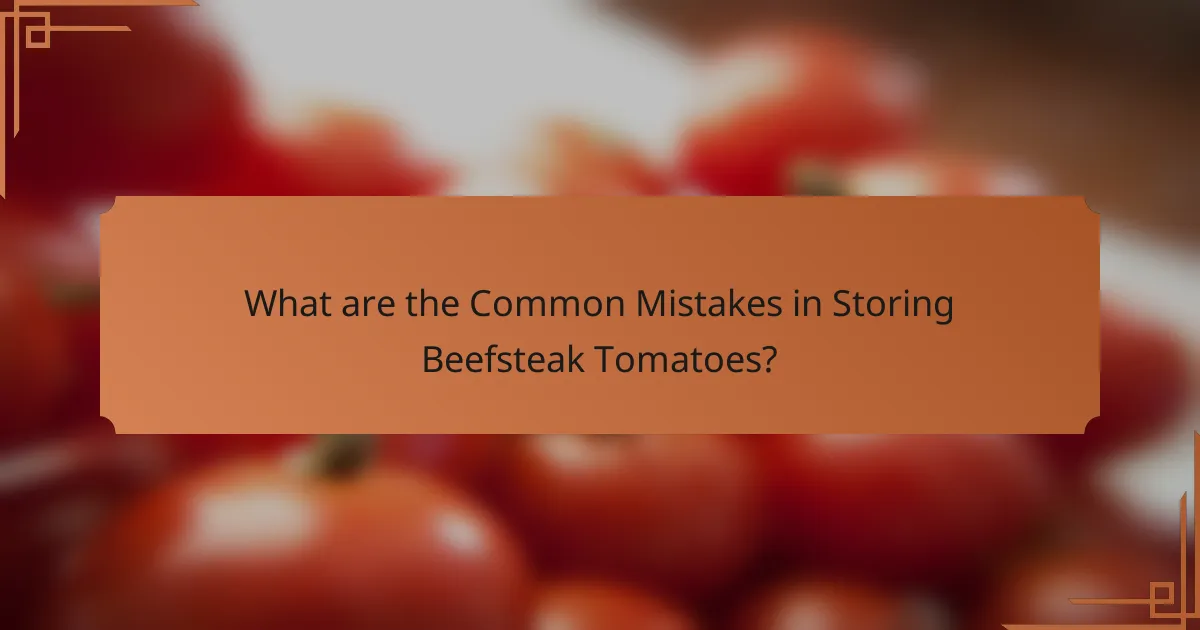
What are the Common Mistakes in Storing Beefsteak Tomatoes?
Common mistakes in storing beefsteak tomatoes include improper temperature settings, storing them alongside other fruits, and ignoring bruises or damage. These errors can lead to a decline in flavor, texture, and overall freshness.
Improper Temperature Settings
Beefsteak tomatoes thrive best at room temperature, ideally between 18-22°C (65-72°F). Storing them in the refrigerator can cause them to lose flavor and develop a mealy texture. If you need to store them for longer periods, consider a cool, dark place instead.
Avoid exposing tomatoes to extreme temperatures, whether too hot or too cold, as this can accelerate spoilage. Regularly check the storage area to maintain optimal conditions.
Storing with Other Fruits
Beefsteak tomatoes should not be stored with other fruits, particularly those that emit ethylene gas, like bananas and apples. Ethylene can cause tomatoes to ripen too quickly, leading to over-ripening and spoilage. Keep tomatoes separate to preserve their quality.
If you must store them together, ensure that the tomatoes are fully ripe and consume them promptly to avoid waste.
Ignoring Bruises and Damage
Bruised or damaged beefsteak tomatoes should be removed from storage immediately, as they can accelerate the decay of surrounding tomatoes. Inspect your tomatoes regularly for any signs of bruising or soft spots.
To prevent damage, handle tomatoes gently during transport and storage. If you notice any bruised tomatoes, use them quickly in cooking to minimize waste.
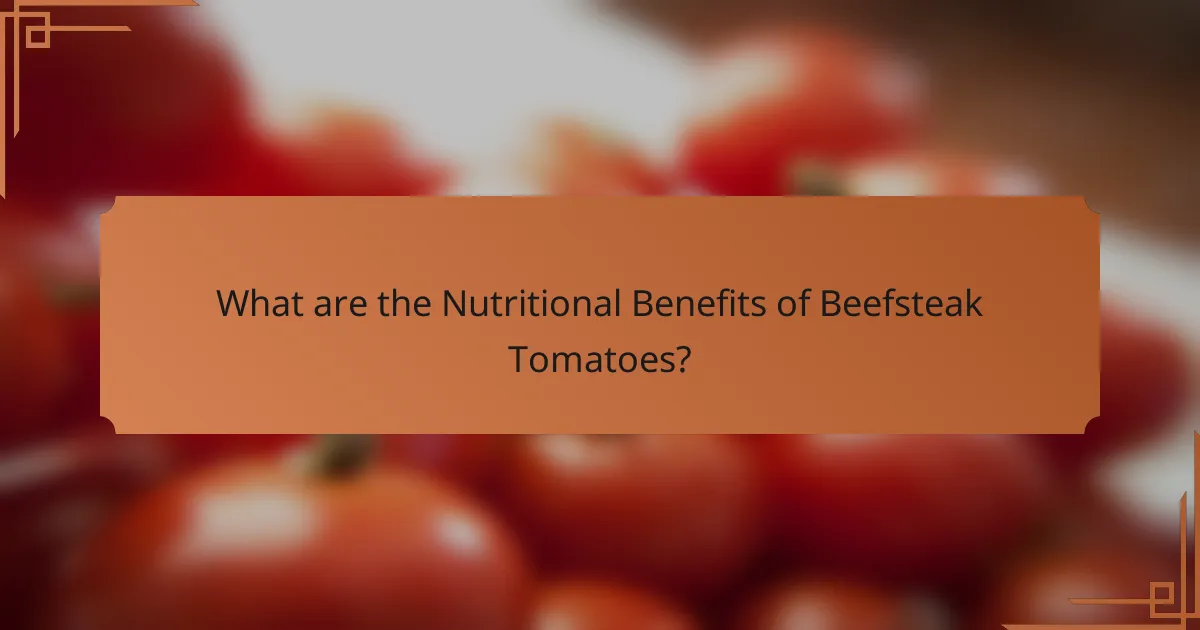
What are the Nutritional Benefits of Beefsteak Tomatoes?
Beefsteak tomatoes are not only delicious but also packed with essential nutrients. They provide a variety of vitamins and minerals that contribute to overall health, making them a great addition to a balanced diet.
Vitamins and Minerals
Beefsteak tomatoes are rich in vitamins A, C, and K, which play crucial roles in immune function, skin health, and blood clotting, respectively. A medium-sized beefsteak tomato can provide a significant portion of the daily recommended intake for these vitamins.
In addition to vitamins, these tomatoes contain important minerals such as potassium and magnesium. Potassium helps regulate blood pressure, while magnesium supports muscle and nerve function. Including beefsteak tomatoes in your meals can help you meet your mineral needs effectively.
To maximize the nutritional benefits, consider consuming beefsteak tomatoes raw in salads or sandwiches. Cooking them can enhance the availability of certain antioxidants, like lycopene, which may offer additional health benefits. Aim for a variety of preparations to enjoy both their taste and health advantages.
